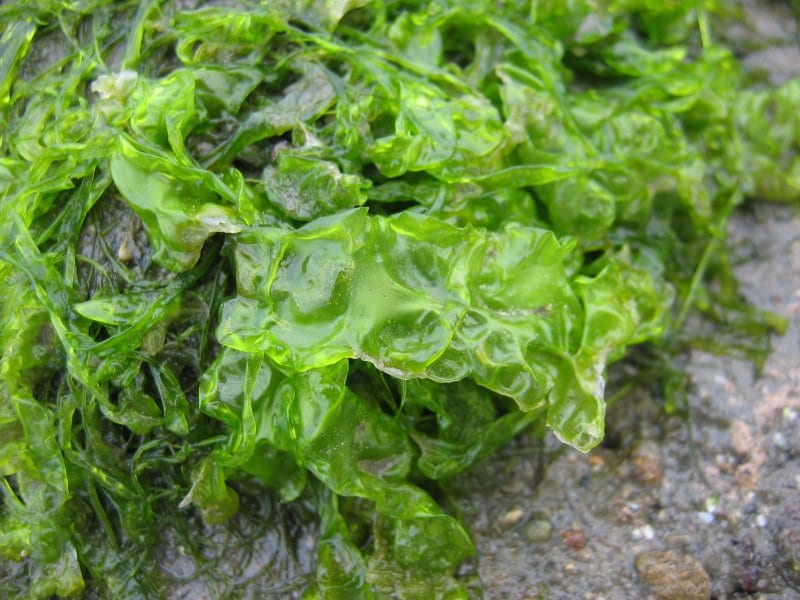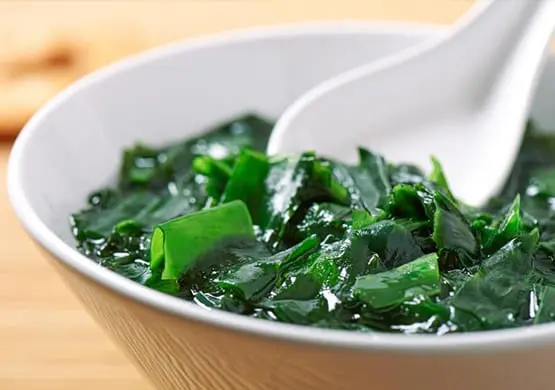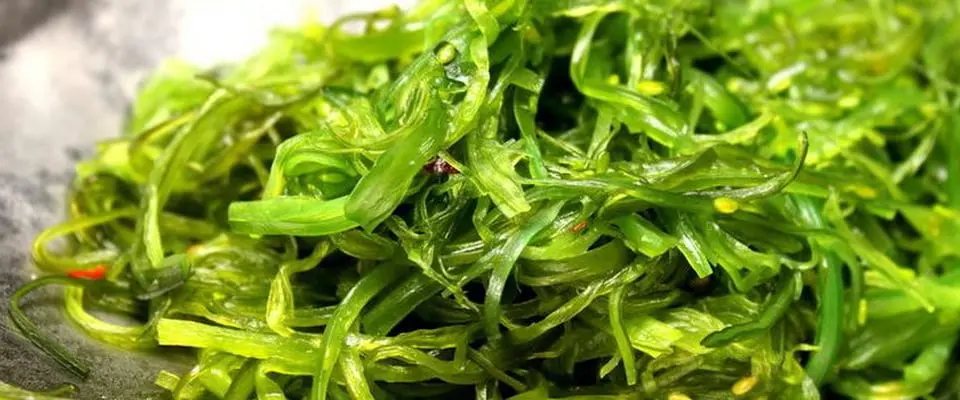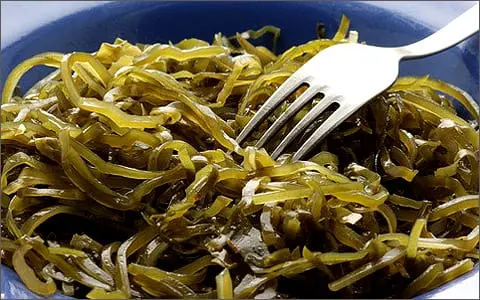Contents
Description
Algae are the most widespread and numerous living creatures on Earth. They live everywhere: in water, moreover, in any (fresh, salty, acidic and alkaline), on land (soil surface, trees, houses), in the bowels of the earth, in the depths of the soil and limestone, in places with hot temperatures and in ice … They can live both independently and in the form of parasites, invading plants and animals.
Everything you need to know about seaweed before making a salad or heading out to a Japanese restaurant. For the Japanese, Koreans and Chinese, seaweed is one of the staples of the national cuisine. They also migrated to us, to sushi bars, restaurants, and now to the shelves of grocery stores in the form of snacks.
Varieties of algae
There are several varieties of edible algae with different nutrient profiles. The three most common categories are kelp such as kombu, which is used to make dashi, a traditional Japanese broth; green algae – sea salad, for example; and red algae such as nori, which is often used in rolls. Let’s talk about these types of algae.
Composition and calorie content

While each type of algae has its own differences in terms of nutritional value, it is generally a fairly low calorie food. Many varieties contain much less sodium than their salty taste would suggest. In any case, seaweed is much healthier than table salt and can be a good alternative to it in certain dishes.
Many types of seaweed contain as much protein and amino acids per gram as beef. However, since algae is light and much less per serving, eating beef-equivalent amounts may not be realistic. The digestibility of seaweed proteins also varies depending on the type.
Marine plants are also rich in fiber. For example, 5 grams of brown seaweed contains about 14% of the RDA for fiber. It promotes healthy digestion and long-term satiety. Research also shows that fiber-rich foods can help prevent chronic diseases, including heart disease and certain types of cancer.
Many varieties contain polysaccharides, which can improve gut health and help you feel fuller.
Algae, even if consumed in small amounts, can provide more nutrients than vegetables we are used to. For example, they have a much higher concentration of magnesium and iron. Many marine plants also contain vitamins A and K and some vitamin B12, although not in all cases it can be absorbed by humans.
Low-calorie product, 100 g of which contains only 25 kcal. With moderation, it is important to consume only dried algae, the energy value of which is 306 kcal per 100 g. They have a high percentage of carbohydrates, which can lead to obesity.
The benefits of algae

Biologists and physicians confidently state that algae surpass all other plant species in terms of the content of active substances. Seaweed has anti-tumor properties. Numerous legends have been preserved about them in the annals of different peoples.
Seaweed was used not only as an excellent food product, but also as an effective remedy for the prevention and treatment of various diseases. Already in ancient China, seaweed was used to treat malignant tumors. In India, seaweed has been used as an effective remedy in the fight against certain diseases of the endocrine glands.
In ancient times, in the harsh conditions of the Far North, the Pomors treated various diseases with algae, and also used them as practically the only source of vitamins. The qualitative and quantitative content of macro- and microelements in seaweed resembles the composition of human blood, and also allows us to consider seaweed as a balanced source of saturation of the body with minerals and microelements.
Seaweed contains a number of substances with biological activity: lipids rich in polyunsaturated fatty acids; chlorophyll derivatives; polysaccharides: sulfated galactans, fucoidans, glucans, pectins, alginic acid, as well as lignins, which are a valuable source of dietary fiber; phenolic compounds; enzymes; plant sterols, vitamins, carotenoids, macro- and microelements.
As for individual vitamins, microelements and iodine, there are more of them in seaweed than in other products. The thallus of brown algae contains vitamins, trace elements (30), amino acids, mucus, polysaccharides, alginic acids, stearic acid. Mineral substances absorbed from water by brown algae in huge quantities are in an organic colloidal state, and can be freely and quickly absorbed by the human body.
They are very rich in iodine, most of which is in the form of iodides and organoiodine compounds.

Brown algae contain a bromophenol compound that has an effect on pathogenic microorganisms, especially bacteria. Brown algae contains a large amount of macro- and microelements necessary for humans (iron, sodium, calcium, magnesium, barium, potassium, sulfur, etc.), and in the most accessible chelated form for assimilation.
Brown algae has a number of physiological properties: it affects the contractility of the heart muscle, has anti-thrombotic activity, prevents the development of rickets, osteoporosis, dental caries, brittle nails, hair, and has a general strengthening effect on the body.
As a seafood, brown seaweed contains those natural elements that are found in small quantities in vegetables. Brown seaweed helps the immune and endocrine systems to resist stress, prevent disease, improve digestion, metabolism and overall well-being.
Contraindications

Studies have shown that heavy metals lurking in polluted water, including arsenic, aluminum, cadmium, lead, rubidium, silicon, strontium, and tin, can spoil some types of algae, although the type and level of pollution varies significantly depending on the natural environment. habitat of the plant.
Hijiki – thin seaweed that looks black when cooked and is often used in Japanese and Korean snacks – is often contaminated with arsenic. The United States, Australia, some countries in Europe and Asia have issued warnings from medical organizations about this type of algae, but hijiki can still be found in many establishments.
Seaweed contains some nutrients that can pose health risks to certain groups of people. Because algae absorbs iodine from seawater, they should not be consumed by people with thyroid disease, as this can interfere with the thyroid gland’s ability to produce hormones.
Seaweed is generally rich in vitamin K, which does not interact well with blood thinners, and potassium. Therefore, the use of algae can lead to dangerous consequences for
people with heart and kidney problems that prevent them from excreting excess potassium from the body.
For these reasons, eating algae is worth in moderation. Although occasionally consuming algae salads or rolls is even beneficial, experts recommend treating them more as a seasoning than as a main dish. Even among the Japanese, this side dish is served once or twice a week or used as a seasoning for miso soup.










